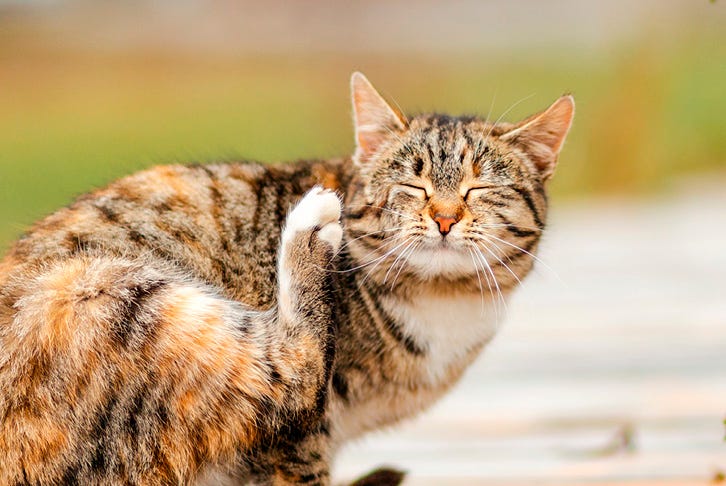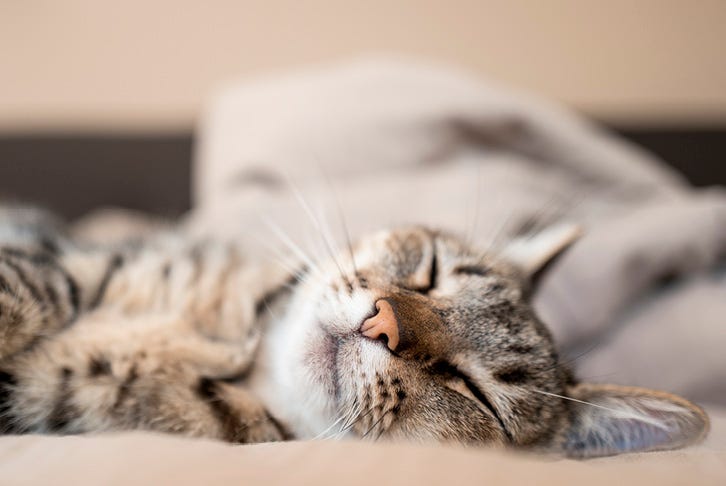Controlling fleas, worms & other parasites
If you've just adopted a kitten or puppy, controlling fleas, worms and other parasites is going to be an important task to pop in the calendar. While the irritation of these fleas and parasites are usually more noticeable in the spring and summer, it's a year round task to keep on top of.
Staying on top of fleas
Before your pet starts to itch, we recommend you get on top of the flea challenge. This is especially important if you haven’t had a furry friend before, because it’s likely your home is currently flea-free (and you want it to stay that way!).
Infestation can start long before you see fleas scrambling through your pet’s coat or hopping around the house. A single female lays up to 2,000 eggs in her lifetime and 95% of fleas live in the environment (carpet, bedding, gardens, under house areas) in various life stages. While fleas tend to be more active in the summer months, the best solution for avoiding fleas is all year round protection.
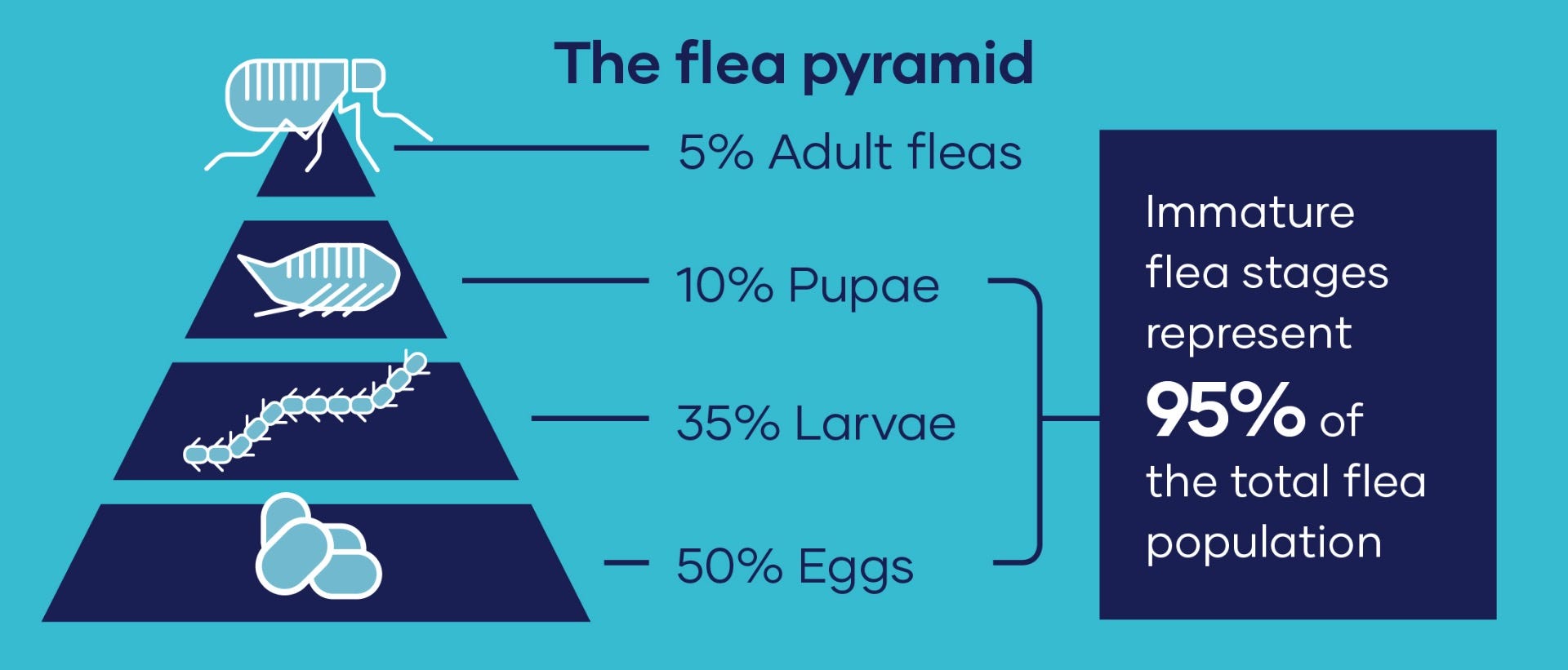
Recognise the symptoms of a flea infestation
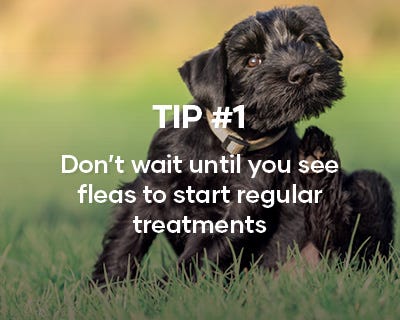
How to kill, clean and treat
If you've seen fleas, you'll need to swing into action and follow the steps below. If fleas aren’t in evidence yet, you can move straight to the prevention step.
- Rapid kill- with a treatment to kill all live fleas quickly
- Treatment- with a topical or oral treatment; treat all pets in the household at the same time
- Clean- wash your puppy’s bedding in hot water and detergent
- Environment- flea bomb your house and car
- Prevention– put a regular flea treatment appointment in your calendar. You can also set up a repeat delivery so you never forget, plus save 15% on your treatments.
More about flea treatments
For advice about puppy flea treatment, kitten flea treatment or a flea treatment for another type of furry pet, talk to an Animates Vetcare vet or call into an Animates store.
- Topical - spotted onto the back of the pet’s neck, the medication spreads over the animal’s entire body via oil glands. Topical treatments will repel and kill fleas, which interrupts the flea life cycle.
- Oral - taking a tablet will work to disrupt the life cycle of fleas. Oral treatments repel and kill fleas.
- Flea collars - when worn, flea collars will repel and kill fleas and ticks for up to eight months. Specialised kitten flea collars are available at Animates.
- Flea shampoo - when you wash your pet with medicated shampoo, fleas and ticks will be killed on contact. Flea shampoos are best used in conjunction with other treatments.
- Flea sprays and powders - these work to repel fleas and ticks; some sprays also provide treatment for biting and flea allergies. Be careful when using sprays around the eyes, nose, and mouth, as they can be irritating to both animals and humans.
More about environment treatments for fleas
Effective flea control means dealing with the fleas living in your carpet, pet bedding, vehicles, and soft furnishings (couches).
- Flea bomb – great for treating a large area, however it’s important you treat the entire house rather than just one room. We recommend treating your car as well. Flea bombs can be hazardous to pets, so it’s important to keep them away while treatment is taking place.
- Flea vacuum powder or spray - can be spread over your carpet and on upholstered furniture. It’s important that you treat all areas and appropriate furniture, as a re-infestation can occur if something is missed. Treatment will need to sit for a period of time, often overnight, before it’s vacuumed up. Remove the vacuum cleaner bag and throw it away in an outdoor bin to prevent surviving fleas from escaping and re-infecting the house. We recommend washing your pet’s bedding and soft toys on the hottest wash setting possible.
Keeping worms away
Worms are common in pets. It's important to keep on top of your pet's treatments as worms can survive in the environment for up to five years.
There are four main types of worms that affect our pets; Roundworms, Tapeworms, Whipworms and Hookworms. Most worms can be transmitted from animal to human orally or via skin contact, so worm control is about your health as well as your pet's.
Always get advice from Animates or Animates Vetcare before buying worm tablets for kittens and puppies, to ensure you get the right type of treatment and dose.
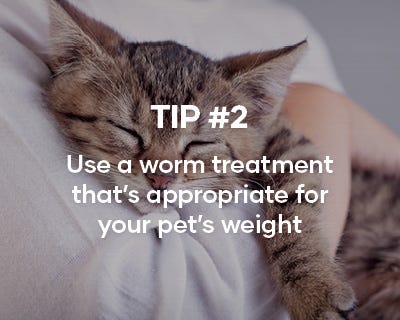
Symptoms
Commonly your pet will show no signs of a worm infestation, however in young animals roundworms can cause:
- Diarrhoea
- Bloating of the tummy
- Weight loss and reduced appetite
- Dehydration
- A failure to thrive
- Bottom dragging (pet drags their bottom along the floor)
- In cats, tapeworm segments may be seen around their rear end
Minimising the risk of worm infection for you and your pet:
- Wash your hands after gardening or when playing with your pet
- Regularly clear the lawn of pet faeces
- Avoid playing or walking barefoot in faecally-contaminated areas
- Wash fruits and vegetables thoroughly before consumption
- Prevent pets from hunting wild animals (including slugs and snails) and avoid raw meat and offal (see your veterinarian for specific advice)
Worm treatment
Regularly worming kittens and puppies helps to ensure they grow up healthy. Animates Vetcare recommends:
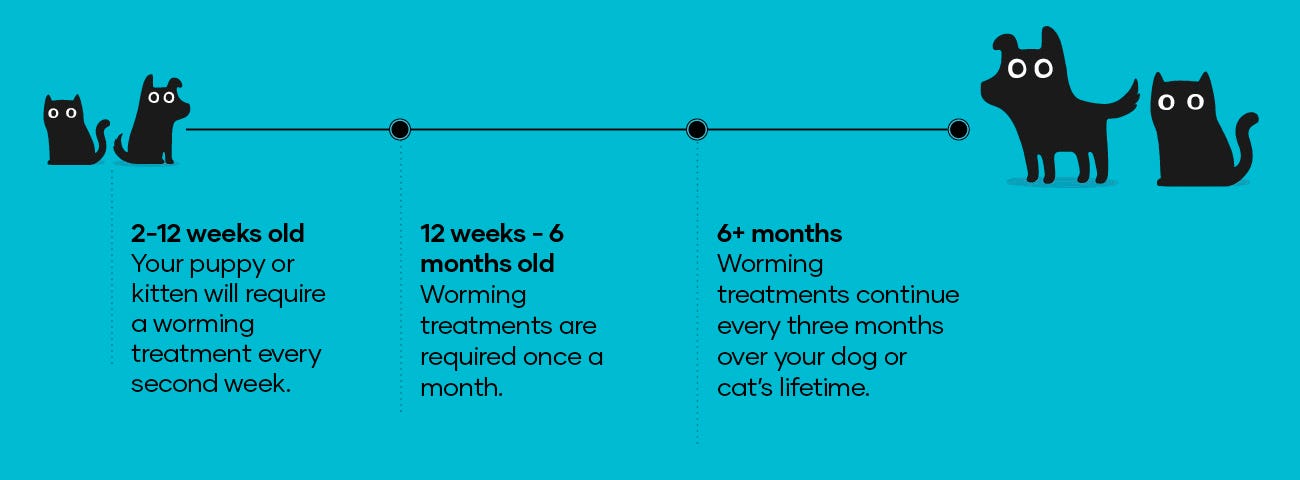
Watch for other parasites
- Ear mites can be the cause of itchy ears in pets, but can be easily avoided with the use of specific flea treatments.
- Demodex mites and sarcoptic mange can cause a variety of symptoms. Demodex typically causes hair loss on the head, face, and feet. Sarcoptic mange is far less common, but it causes terrible itching. Both can be effectively treated with products from Animates Vetcare.
- Lice are seldom a problem if flea control is regularly used. There are two main types of lice that can affect your pet, biting lice and suckling lice. Usually white in colour, lice can sometimes be seen in your pet’s coat.
- Cattle ticks can be a problem in rural and farming areas. The only cattle tick in New Zealand, haemaphysalis, can infest humans, horses, and domestic pets. If you need puppy tick treatment, talk to Animates Vetcare.
Staying on top of fleas
Before your pet starts to itch, we recommend you get on top of the flea challenge. This is especially important if you haven’t had a furry friend before, because it’s likely your home is currently flea-free (and you want it to stay that way!).
Infestation can start long before you see fleas scrambling through your pet’s coat or hopping around the house. A single female lays up to 2,000 eggs in her lifetime and 95% of fleas live in the environment (carpet, bedding, gardens, under house areas) in various life stages. While fleas tend to be more active in the summer months, the best solution for avoiding fleas is all year round protection.
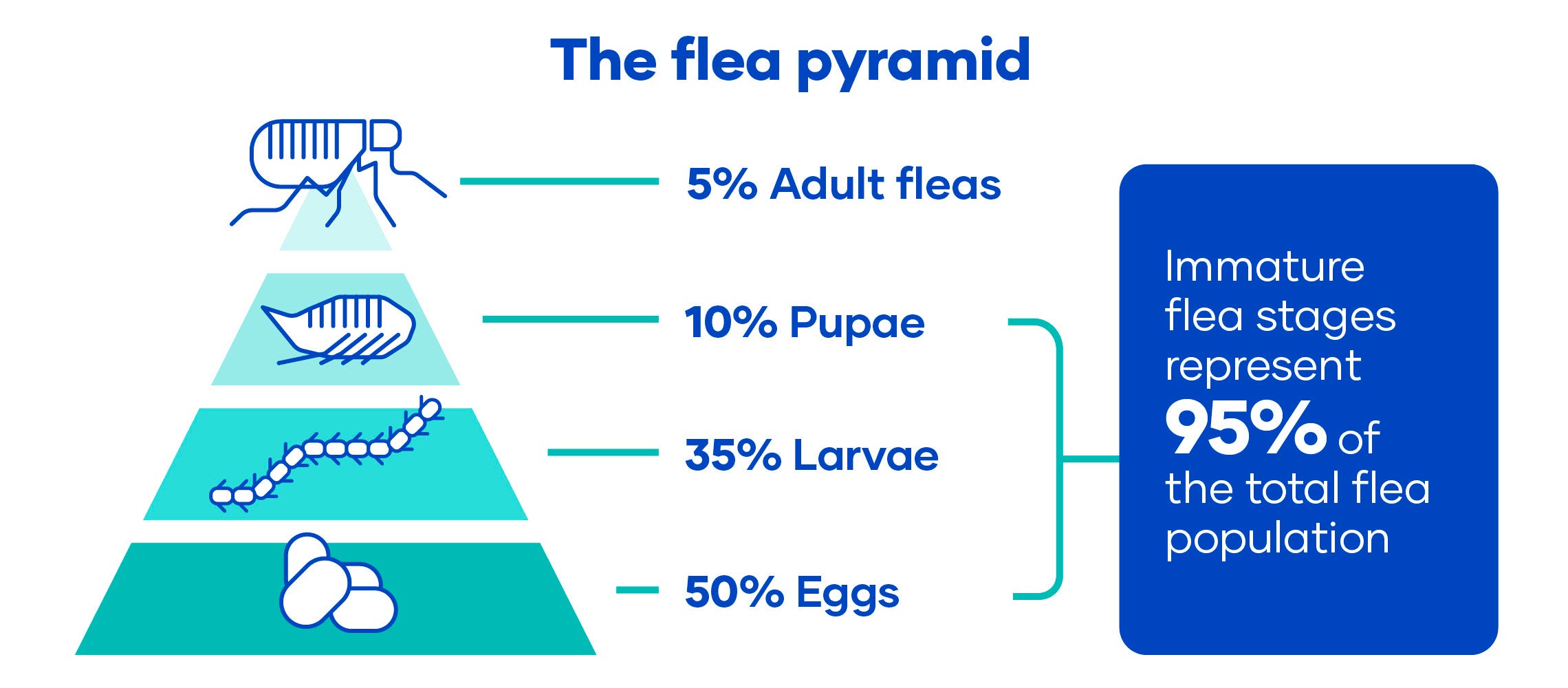
Recognise the symptoms of a flea infestation
If your furry friend does have fleas, there's a few symptoms you may notice. They may be scratching or grooming a lot more than normal and some pets lose fur. You may also see the fleas or flea dirt in their coat and have even experienced flea bites yourself.
Flea bites can cause your pet's skin to become irritated, one flea can bite your pet 400 times a day. Heavy infestations can also cause anaemia or flea allergy dermatitis. So even if you don't notice any fleas, you need to get a flea programme underway at the earliest opportunity.
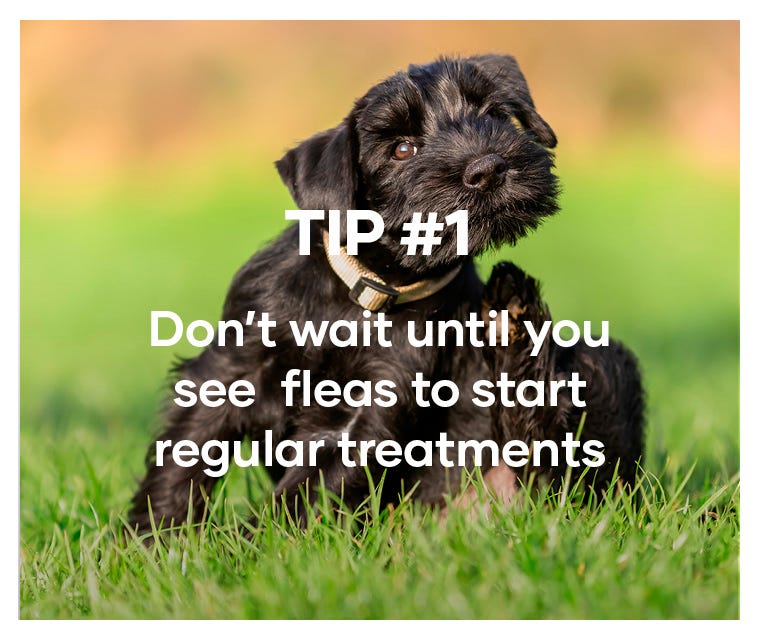
How to kill, clean and treat
If you've seen fleas, you'll need to swing into action and follow the steps below. If fleas aren’t in evidence yet, you can move straight to the prevention step.
- Rapid kill – with a treatment to kill all live fleas quickly
- Treatment – with a topical or oral treatment; treat all pets in the household at the same time
- Clean – wash your puppy’s bedding in hot water and detergent
- Environment – flea bomb your house and car
- Prevention – put a regular flea treatment appointment in your calendar. You can also set up a repeat delivery so you never forget, plus save 15% on your treatments.
More about flea treatments
For advice about puppy flea treatment, kitten flea treatment or a flea treatment for another type of furry pet, talk to an Animates Vetcare vet or call into an Animates store.
- Topical – spotted onto the back of the pet’s neck, the medication spreads over the animal’s entire body via oil glands. Topical treatments will repel and kill fleas, which interrupts the flea life cycle.
- Oral – taking a tablet will work to disrupt the life cycle of fleas. Oral treatments repel and kill fleas.
- Flea collars – when worn, flea collars will repel and kill fleas and ticks for up to eight months. Specialised kitten flea collars are available at Animates.
- Flea shampoo – when you wash your pet with medicated shampoo, fleas and ticks will be killed on contact. Flea shampoos are best used in conjunction with other treatments.
- Flea sprays and powders – these work to repel fleas and ticks; some sprays also provide treatment for biting and flea allergies. Be careful when using sprays around the eyes, nose, and mouth, as they can be irritating to both animals and humans.
More about environment treatments for fleas
Effective flea control means dealing with the fleas living in your carpet, pet bedding, vehicles, and soft furnishings (couches).
- Flea bomb – great for treating a large area, however it’s important you treat the entire house rather than just one room. We recommend treating your car as well. Flea bombs can be hazardous to pets, so it’s important to keep them away while treatment is taking place.
- Flea vacuum powder or spray – can be spread over your carpet and on upholstered furniture. It’s important that you treat all areas and appropriate furniture, as a re-infestation can occur if something is missed. Treatment will need to sit for a period of time, often overnight, before it’s vacuumed up. Remove the vacuum cleaner bag and throw it away in an outdoor bin to prevent surviving fleas from escaping and re-infecting the house. We recommend washing your pet’s bedding and soft toys on the hottest wash setting possible.
Keeping worms away
Worms are common in pets. It's important to keep on top of your pet's treatments as worms can survive in the environment for up to five years.
There are four main types of worms that affect our pets; Roundworms, Tapeworms, Whipworms and Hookworms. Most worms can be transmitted from animal to human orally or via skin contact, so worm control is about your health as well as your pet's.
Always get advice from Animates or Animates Vetcare before buying worm tablets for kittens and puppies, to ensure you get the right type of treatment and dose.
Symptoms
Commonly your pet will show no signs of a worm infestation, however in young animals roundworms can cause:
- Diarrhoea
- Bloating of the tummy
- Weight loss and reduced appetite
- Dehydration
- A failure to thrive
- Bottom dragging (pet drags their bottom along the floor)
- In cats, tapeworm segments may be seen around their rear end
Minimising the risk of worm infection for you and your pet:
- Wash your hands after gardening or when playing with your pet
- Regularly clear the lawn of pet faeces
- Avoid playing or walking barefoot in faecally-contaminated areas
- Wash fruits and vegetables thoroughly before consumption
- Prevent pets from hunting wild animals (including slugs and snails) and avoid raw meat and offal (see your veterinarian for specific advice)
Worm treatment
Regularly worming kittens and puppies helps to ensure they grow up healthy.
Animates Vetcare recommends:

Watch for other parasites
- Ear mites can be the cause of itchy ears in pets, but can be easily avoided with the use of specific flea treatments.
- Demodex mites and sarcoptic mange can cause a variety of symptoms. Demodex typically causes hair loss on the head, face, and feet. Sarcoptic mange is far less common, but it causes terrible itching. Both can be effectively treated with products from Animates Vetcare.
- Lice are seldom a problem if flea control is regularly used. There are two main types of lice that can affect your pet, biting lice and suckling lice. Usually white in colour, lice can sometimes be seen in your pet’s coat.
- Cattle ticks can be a problem in rural and farming areas. The only cattle tick in New Zealand, haemaphysalis, can infest humans, horses, and domestic pets. If you need puppy tick treatment, talk to Animates Vetcare.







